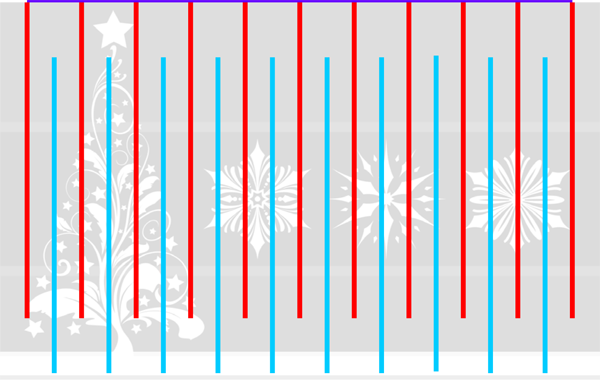The simplest things can often be the most entertaining, and using things for uncommon uses other lends excitement to the activity. If you have children (or adults) looking for ways to create and play with simple things, we've got some winter doldrums-busting activities for you.
Sidewalk Chalk
Sidewalk Paint
Ivory Soap Sculpture
Climb-through Cards
Materials
Instructions
Prepare the tubes by cutting pieces of wax paper (about 6" x 6"), rolling them, and placing them in the tubes (this will prevent the chalk from sticking to the tubes). Seal one end with duct tape. Place the tubes, duct tape-side down, on a flat surface (a cookie sheet or pan works great to protect countertops!).
In the plastic container, pour in ¾ cup of water. Add 1½ cups of Plaster of Paris and stir with a plastic spoon.
Add 2-3 tablespoons of the paint (or other colorant). Add more if you want very intense color. If you would like pastel colors, just mix white paint with the colored paint to soften the tone. If desired, you may add a couple of drops of essential oils to make scented sidewalk chalk!
Scoop the plaster mixture into the tubes (or other form). To release the air bubbles that form, be sure to tap the sides of the tubes. You can peel away the tubes after about an hour, but it may take several days for the chalk sticks to dry thoroughly.
Do not mix it with your hands or allow children to coat their hands with it.
Materials
Instructions
Mix baking soda, cornstarch, and warm (nearly hot) water in a container. Add water until you get to the desired consistency. Add food coloring.
After the painting is done, put vinegar into the spray bottle and spray the paint. It will foam and fizzle like magic!
Paint may be stored in a sealed container.
Materials
Instructions
Cut off a section of soap (about 1/3 of a bar). Place on the plate and heat in the microwave for about 80 seconds. Watch the amazing transformation!
Note: to remove the soap smell from your microwave, heat water with lemon juice or vanilla in it.
The science behind it
What may surprise you is that Ivory soap is a foam! Foam doesn't have to be squishy; it can be solid. A foam is any substance that traps gas inside compartments within the substance (like cells). Bone is also a foam.
What makes Ivory soap a foam is that it has air pockets with water trapped inside them. That's why Ivory floats better than other soaps (they sink right to the bottom). When you heat the soap in the microwave, it softens. What is also happening is that the heat of the microwave is causing the air pockets to expand and the water in them to turn to vapor. Because the heat is softening the soap, the gases that are expanding and pushing on it make it expand. It looks different, but it's actually chemically the same thing (and you can still use it!).
This is also a demonstration of Charles' Law (it says that gas expands as temperature increases). To turn this demonstration into an experiment, try other brands of soap or try leaving a bar of Ivory unwrapped to allow it to dry out and then try it.
Materials
Instructions
If the card is flat or you're using something other than a greeting card, fold the card in a "hot dog" fold. Looking at the diagram below, cut along all the red, then purple line(s). Be very careful to stop cutting where the lines stop. The red lines will but cut from the top edge, and the blue lines will be cut from the bottom edge. After you have cut the red and purple lines, cut the blue lines, paying careful attention to where each one begins and ends! The closer together the cuts are, the larger the space will be, so do not limit yourself to this number of cuts, just the pattern of them.
Topology is the area of mathematics that studies shapes and what they can turn into when they are stretched, twisted, or deformed. A Möbius strip is an example of simple topology. If you are interested in learning more, read about the Seven Bridges of Königsberg problem that got the whole idea rolling!
